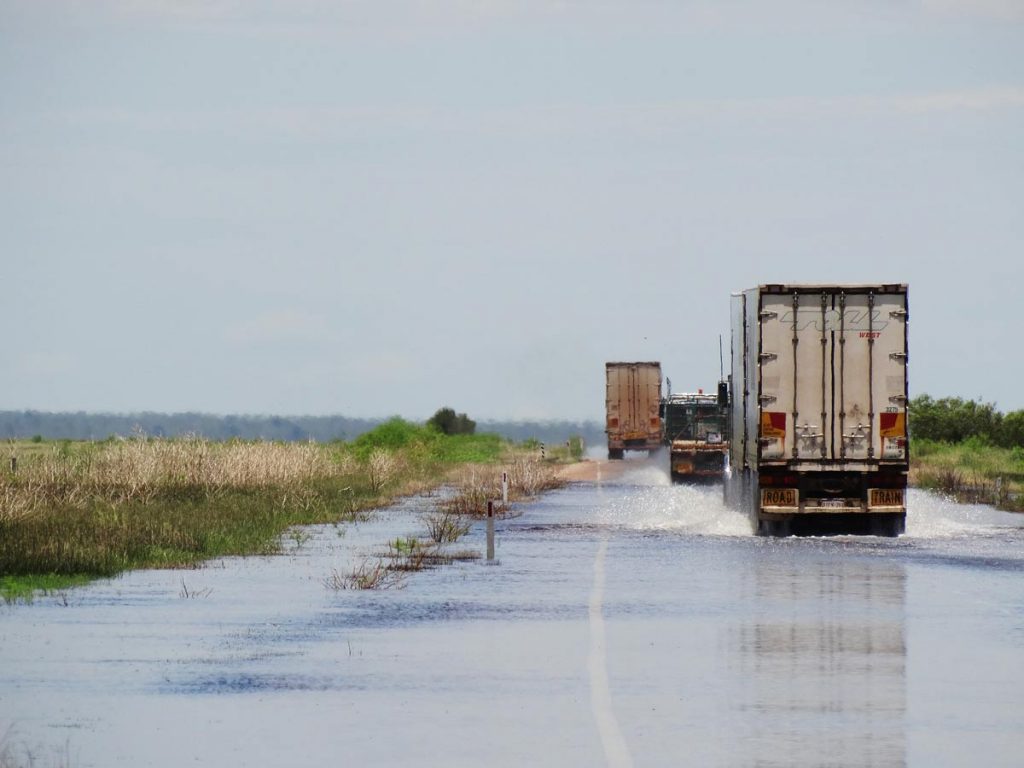The recent floods that have affected homes and businesses across Queensland and New South Wales may have brought about one of the hardest insurance renewal seasons yet.
In recent years, the coronavirus pandemic and various other global factors saw us enter a ‘hard’ insurance market. This meant an increase in premiums and harder-to-access insurance coverage.
Just as we thought that we were finally beginning to shift away from this hard market, south east QLD and NSW experienced record rains resulting in nine deaths and several homes and businesses being damaged.
According to the Insurance Council of Australia (via Insurance Business Australia), the latest estimated claims cost (as at 11 March 2022) in south east QLD and NSW was approximately $1.77 billion, with some analysts anticipating that claims may surpass $3 billion.
As a result of this, we may now be facing one of the most challenging insurance renewal seasons to date. This, in turn, could leave many businesses tackling higher premiums, encountering more cumbersome claims processes and finding it even more difficult to obtain their desired cover.

How can you lower insurance costs and avoid losing cover?
Although we may be facing challenging times, there is still light at the end of the tunnel.
By helping our clients put the right strategies in place, we are continuing to help several businesses achieve positive insurance outcomes.
Here are 4 things you can do:
1. Be disciplined about your renewals

We strongly recommend you ensure that your business is up to date. Work with your broker to present your business to insurers as favourably as possible. This includes having the following information ready at least 8 weeks from your renewal:
- Company information (correct trading entity, ABN, website, business establishment date)
- Updated business activities (split of activities by revenue, split of activities by industry, split of revenue by States and countries, full details of revenue generated)
- Claims experience (previous 5 years)
- Financial information of previous and next 12 months (including turnover, payroll and insurable gross profit)
- Details of employees and contractors (including total amount paid and percentage breakdown of subcontractor activities)
- Management risks (including procedures for handling of complaints regarding discrimination and harrassment)
For a more detailed list, refer to our business insurance checklist.
2. Provide insurers with key information about your premises

To create competition for your risk, it can be useful to obtain essential information for insurers to underwrite your risk. To obtain this essential information, you can:
Conduct a building valuation: Typically, conducting a building valuation will help you determine the various replacement costs that could be involved with losses associated with your building.
Independent risk surveys: Independent risk surveys are surveys conducted by third parties to assess the various risks of your premises. A property risk survey can demonstrate to insurers your proactive approach to risk management as well as demonstrate your adherence to workplace health and safety.
Thermographic scan reports: Having thermal imaging conducted on your premises can help assess equipment and structural faults that may not necessarily be obvious with the naked eye. They are designed to discover faults before they worsen, and having demographic scans of your premises will demonstrate to insurers your willingness to minimise risks.
3. Be aware of the limitations of your current policies

We recommend speaking to your business insurance broker to know what you’re actually covered for and what you can claim. Your coverage may also change during your renewal, so it is important to be thoroughly prepared.
Flood exclusions: If your business has any type of flood exposure you should be closely looking at your insurance coverage now. Many business insurance policies will exclude claims arising from flood as standard. Flood coverage usually needs to be added on as an optional coverage and the premium charged will be dependent on the flood exposure in your specific location.
Depending on your location, flood coverage may be very expensive or not available at all.
Storm damage: Most standard Business Insurance policies contain clauses which limit cover for storm damage to textile blinds, shade houses, glass houses, gates, fences, signs and retaining walls. The term ‘storm damage’ can extend to storm, rainwater, wind, hail and snow.
How much cover is available depends on your specific provider; however, the limits can range from no cover whatsoever up to $25,000 under a Steadfast CGU policy wording.
It is important to review your exposure to storm damage for assets such as blinds, awnings, gates and glass houses. If you believe you have considerable exposure, then you should urgently speak to your business insurance broker about getting agreed cover for these items.
Named cyclones: Many insurers specifically place significant excesses on claims arising from “named cyclones”. These types of conditions can be imposed on businesses as far south as the Sunshine Coast, Brisbane and Gold Coast.
In some cases these excesses can be as high as $50,000 per claim if the damage is a result of weather linked to a named cyclone. Many small businesses would be unable to absorb such a high excess.
Therefore it is crucial that you check your insurance policy schedule for any specific excesses relating to named cyclones. If you need help with this, don’t hesitate to contact us.
Hail damage exclusions: If you’re a business with stock left in the open air then you need to carefully consider your exposure to hail damage. The biggest example of this is a car dealer; however, there are also many other businesses with millions of dollars of stock exposed to severe weather damage.
It is important you review your exposure to assets or stock in the open air against your insurance coverage for hail damage. The reality is that in certain parts of Australia such as the Sunshine Coast, Brisbane and Gold Coast, hail insurance is very expensive to purchase. In some cases it may be difficult to obtain any coverage whatsoever.
4. Cyber security

According to the Australian Cyber Security Centre, ‘Over the 2020–21 financial year, the ACSC received over 67,500 cybercrime reports, an increase of nearly 13 per cent from the previous financial year.’
In an increasingly digitised world, cyber threats are becoming more frequent than ever. There is ample evidence of all types of organisations – whether small businesses, international organisations and even government institutions – that have not been immune to cyber crime.
A cyber attack during an already serious situation such as a flood can be devastating to a business.
Cyber Insurance, or Cyber Risk Insurance, is a way to safeguard against cyber risks. The right Cyber Insurance policy can protect you against the financial losses involved with:
- Hacking attacks
- Cyber theft from fraudulent representations
- Ransomware
- Malicious code or malware
- Denial of service (DDoS) attacks on your operating system
- Industrial espionage
- Identity or data theft
- Loss of your profits / revenue as a result of having your digital network compromised
- Losses payable to others including third parties such as customers, clients, suppliers and any other party who has had their right to privacy breached.
- Additional expenses required to manage a cyber event response. This can include legal costs, crisis management costs, notification costs and forensic IT costs to establish the cause of the breach and a remediation plan.
Don’t delay any further – you may risk losing vital protection
As we enter what may be our hardest insurance renewal season yet, it is essential that you are proactive about your risk management. Taking a few extra steps to minimise the risks associated with your business can result in more favourable outcomes from your insurer.
It can be worthwhile to speak to a qualified business insurance broker (like us!) to discuss your options in detail and to formulate a strategy to obtain the most ideal risk coverage for your situation.
 This article was written by Tony Venning,
This article was written by Tony Venning,
Managing Director at Crucial Insurance and Risk Advisors.
For further information or comment please email info@crucialinsurance.com.au.
Important Disclaimer – Crucial Insurance and Risk Advisors Pty Ltd ABN 93 166 630 511. This article provides information rather than financial product or other advice. The content of this article, including any information contained on it, has been prepared without taking into account your objectives, financial situation or needs. You should consider the appropriateness of the information, taking these matters into account, before you act on any information. In particular, you should review the product disclosure statement for any product that the information relates to it before acquiring the product.
Information is current as at the date articles are written as specified within them but is subject to change. Crucial Insurance, its subsidiaries and its associates make no representation as to the accuracy or completeness of the information. All information is subject to copyright and may not be reproduced without the prior written consent of Crucial Insurance.
